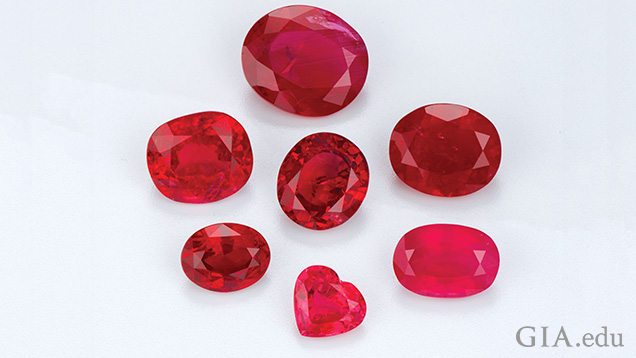How Ruby Prices Are Determined: Insights into the Market and Auctions
- Brian Height
- Jul 6
- 3 min read
Rubies have long been synonymous with passion, power, and prestige—and their prices often reflect that status. At Height’s Fine Jewelry, we understand that buying a ruby is both an emotional and financial investment. To empower your journey, it helps to understand how ruby prices are determined in markets and at auctions worldwide. Let’s take a closer look at the key factors influencing ruby value and what drives demand in today’s dynamic marketplace.

The Four Pillars of Ruby Pricing: The 4Cs—and Then Some
Like diamonds, ruby prices depend on a blend of characteristics, commonly summarized as the 4Cs: Color, Clarity, Cut, and Carat Weight. However, rubies have nuances that make each factor especially impactful:
Color: The single most important factor. The most prized rubies display a pure, vibrant red, often called “pigeon’s blood,” or slightly purplish red. Rubies with orange or purple overtones typically command lower prices. Even subtle differences in hue, saturation, and brightness can cause significant price swings.
Clarity: While many rubies have inclusions—often called “silk”—the size, location, and visibility matter. Stones free from eye-visible inclusions or fractures are rare and greatly increase in value.
Cut: Cut influences how brilliantly a ruby displays its color and sparkle. Rubies are commonly cut as ovals or cushions but maintaining optimal proportions while conserving weight affects pricing.
Carat Weight: Larger high-quality rubies are exceptionally rare, causing prices to increase exponentially with size. For example, a 2-carat ruby of superb color can cost many times more than two 1-carat rubies combined.
Origin and Treatment: Premium or Price Modifier?
A ruby’s geographic origin strongly shapes its value. Burmese rubies from Myanmar’s Mogok region are considered the gold standard, often commanding premium prices. Meanwhile, Mozambican rubies, with their vibrant colors and often cleaner appearance, have become highly desirable but usually at comparatively accessible prices.
Whether a ruby is natural and untreated—or has undergone treatments like heat enhancement or flux healing—also influences pricing. Untreated stones with excellent color and clarity gain collector interest and premiums.
Market Demand and Rarity
Ruby prices are shaped by supply and demand dynamics:
Limited Supply: Fine-quality rubies, especially large ones with superb color, are scarce worldwide, creating intense competition and higher prices among jewelers, collectors, and investors.
Growing Global Demand: Increasing interest from luxury markets in Asia and elsewhere fuels steady price appreciation. Historic auction records highlight market enthusiasm.
Auctions: Where Rarity Meets Record Prices
Some of the most remarkable ruby sales occur at high-profile auctions, setting benchmarks for market value:
In 2015, the 15.04-carat Mogok Burmese Crimson Flame sold for over $30 million at Sotheby’s Geneva—a record for a ruby price at the time.
The Crimson Flame, a 15.04-carat Mogok ruby, achieved the highest price per carat ever recorded, selling for nearly $1.2 million per carat at Christie’s Hong Kong.
These sales reflect buyers’ willingness to pay top dollar for exceptional provenance, size, and color. Auction prices, however, represent the peak of the market; prices for fine rubies outside auction can vary but generally align with these strong valuation trends.
At Height's Fine Jewelry, we believe buying a ruby should be an empowering, transparent experience. With 17 years of expertise and relationships, Height’s Fine Jewelry sources fine rubies with clear provenance. Our personalized consultations guide you through the factors affecting price and quality so you can choose a ruby that fits your vision and value.
Ready to discover the extraordinary world of rubies and understand how their value is created? Contact Height’s Fine Jewelry today and let us help you find your perfect gem.




Comments